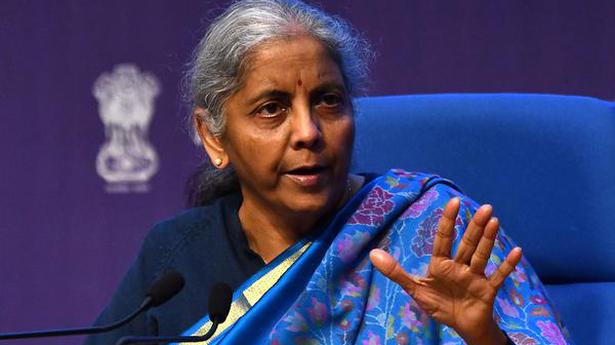
Inflation impact on India’s poor neglible, says FM citing UNDP report
The Hindu
Well-tailored programmes to ensure people don’t run the risk of slipping into poverty seem to have made an impact, she says
The impact of inflation on India’s poor would be negligible as per a United Nations Development Programme report on ‘Addressing the Cost of Living Crisis in Developing Countries’, which also looked at the ripple effects of the Russia-Ukraine war such as energy and food market disruptions.
Finance Minister Nirmala Sitharaman cited the UNDP’s conclusions in the report to emphasise that India’s ‘well-tailored’ programmes carried out over the past two years to support people and ensure they don’t run the risk of slipping into poverty seemed to have made an impact on the ground.
While soaring food and energy prices can push up to 71 million people around the world into poverty, the UNDP said in the report the chances of those in India earning $1.9 a day slipping into poverty due to this upturn would be zero, while the impact would be a mere 0.02% and 0.04% if a poverty line of $3.30 or $5.50 a day was assumed, respectively.
“A recent comparative assessment of price and income support measures shows that targeted transfers not only help poorer households cope with price spikes but also have a significantly lower impact on carbon emissions,” it noted.
The government has allocated more than 1,000 lakh tonnes of foodgrains from April 2020 till September this year, over and above the usual quota under the National Food Security Act and had provided a support of ₹1,500 to 20 crore women Jan Dhan account holders during the first three months of the pandemic, the Minister pointed out.

The Union Budget unveiled on February 1, 2025, has come at a time of unprecedented global uncertainty and a flagging domestic economy. The real GDP growth is estimated at 6.4% for 2024-25 and between 6.3-6.8% for 2025-26, a far cry from >8 percent growth required annually to make India a developed nation by 2047. While much attention has been devoted to the demand stimulus through income tax cuts, not enough is said about the proposed reforms in urban development, tariff rationalisation, and regulatory simplification aimed at making Indian cities and corporates more competitive. Since the majority of economic activity is located in cities (urban areas account for ~55% of GDP) and produced by large corporates (~40% of the national output and 55% of India’s exports), the above-mentioned reforms have a pivotal role in improving India’s trend growth rate. Below we unpack each reform.












